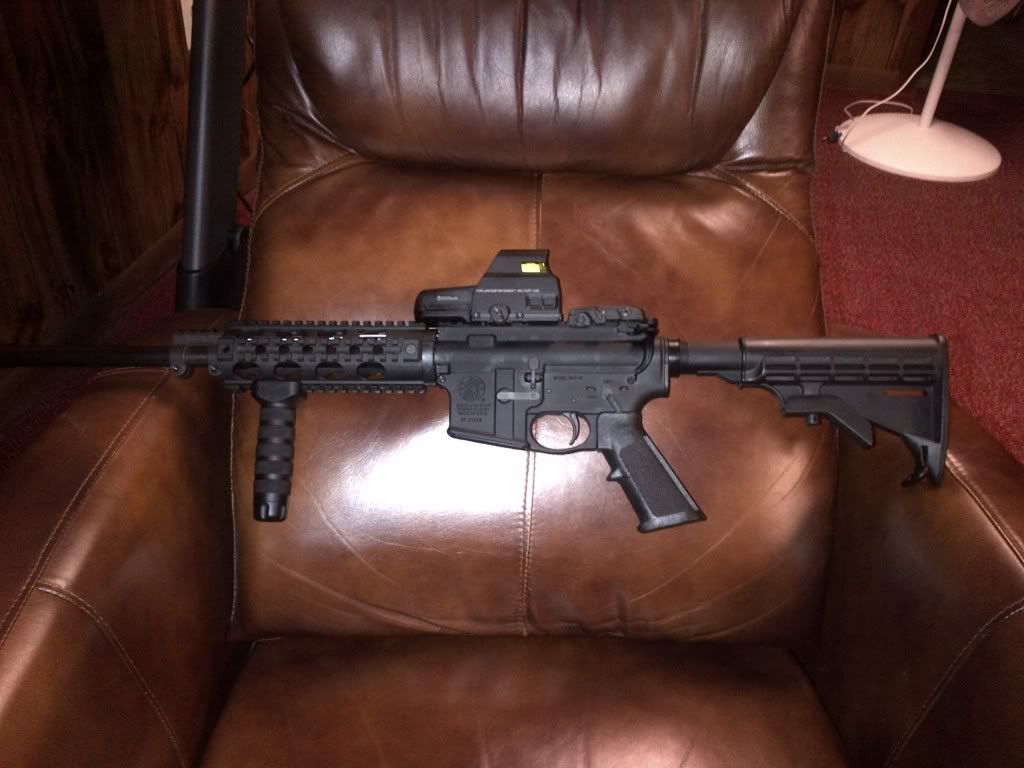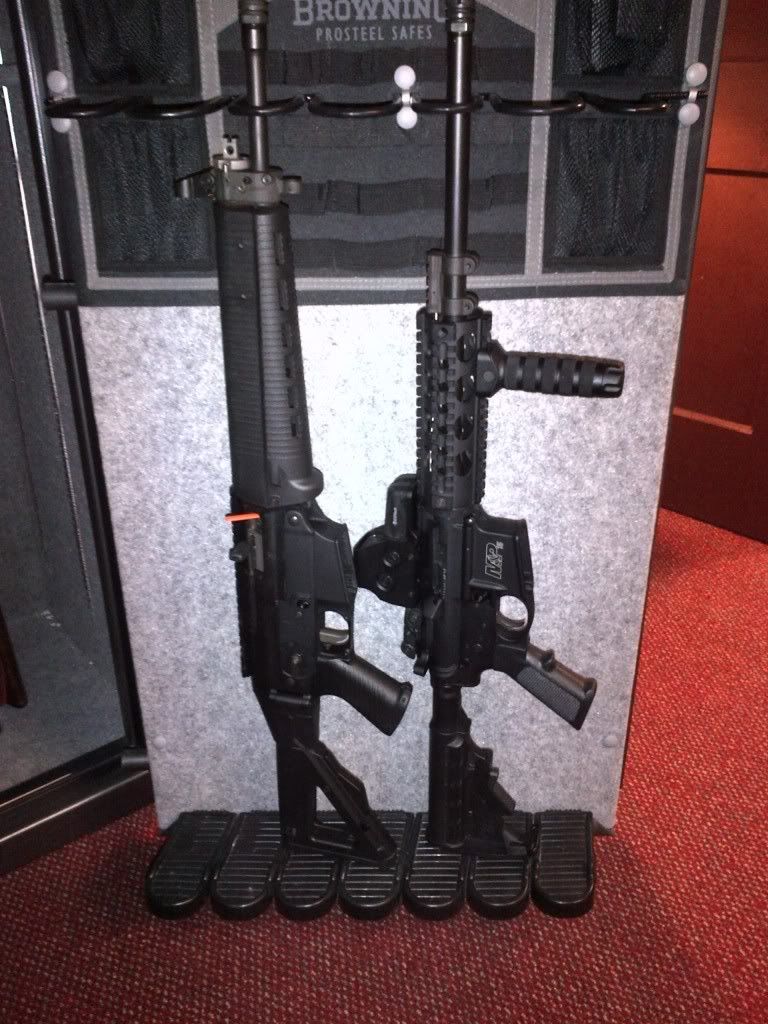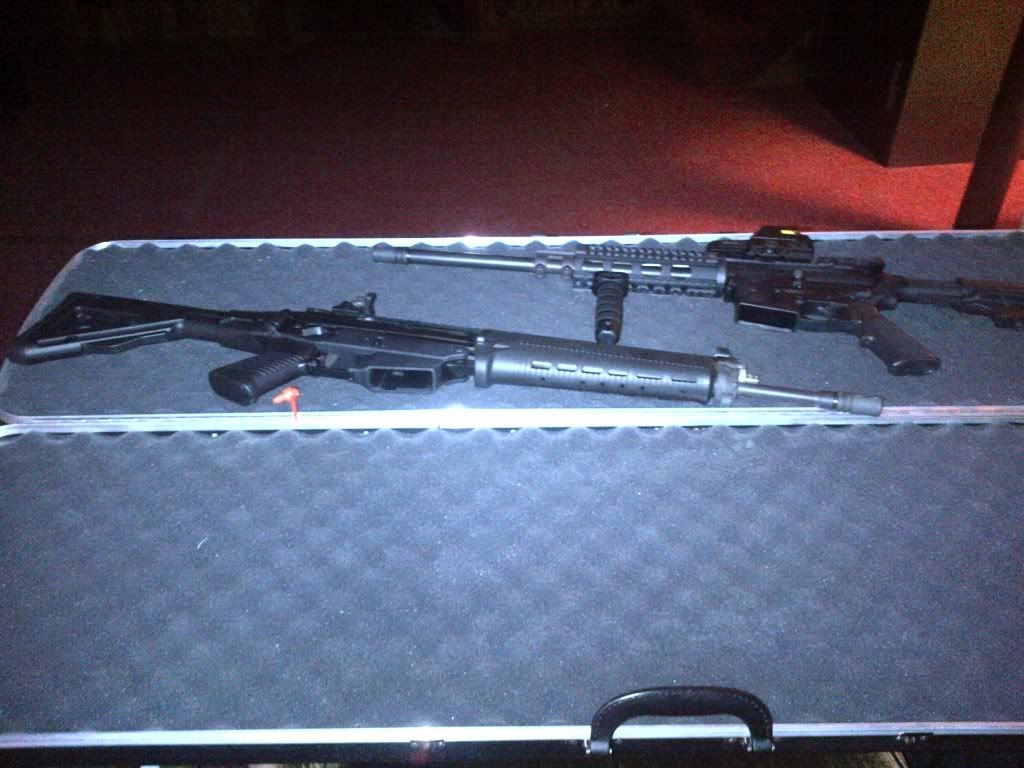If you hang around long enough on gun/shooting forums, at the shooting range or near the gun shop, you'll eventually hear someone refer to an affliction known as "Little Black Rifle Disease" (LBRD). When I first heard the term, I was coming of a flurry of handgun acquisitions and was just beginning to consider the possibility of a hunting rifle. I had ventured over to PAFOA's "rifle" forum to see if I could pick up any advice on an appropriate setup and couldn't help but notice that every other thread seemed to be about "AR-15s." One poster had started a thread with pics, stopping in to show the gang his new (and first) AR-15. One of the responders congratulated him by saying, "welcome to the club, you've now been infected with LBRD."
I didn't think too much of it at the time, and in fact, as noted previously in this blog, went on to purchase a SIG 556 as my first tactical/battle rifle. I chose the SIG because I thought it looked incredibly sweet and because it was such a great deal at the time. I'll admit now that at the time, I really didn't understand the basic differences between the SIG and an AR-15. Well, there are a LOT of differences between the two (more than I can get into in this post) that I don't really understand at this stage, but the basic fundamental difference is that the SIG action differs from an AR-15 action, though both rely on gas generated when the round ignites to power the stroke that ejects the spent casing and loads the next round.
In the weeks that followed my purchase of the 556, I began to think more and more about an AR-15 until eventually I was convinced that there was enough of a difference between the two formats that I should acquire an AR-15 and explore it further. So, after some careful analysis and research, I chose to enter the world of the little black rifle by acquiring a basic, entry level model known as the Smith and Wesson M&P-15 Sport:
I should point out that what you're looking at isn't really a basic Sport, but rather the sport after I added a Yankee Hill quad forerail, a vertical forgrip and an Eotech holographic sight. I decided to get the basic Sport and jazz it up a bit rather than buying a tricked out AR off the shelf. It was probably THAT decision that made me vulnerable to LBRD. You see, the basic operation of the AR-15 is awesome -- it's super light and typically very durable and effective in a variety of conditions, and the minute you begin to handle and contemplate its uses, you become infected. In essence, LBRD is the affliction whereby you come to realize that there are so many possible configurations and setups for this versatile weapon, that there's simply NO WAY one, or two, or maybe even three or more will ever suffice. I'm not sure I owned this Sport for more than a week before I was already contemplating what I could do with the next one. And it's not just the accessories and addons. AR-15's can be built with a variety of barrels, stocks, grips, rails, sights, triggers, etc. What's more, once you understand the basic components, you can LITERALLY build you're own from an endless combination of various pieces. As I sit here and write this today, I have already acquired more than half the necessary components to build my very own AR rifle, though that's the subject of many future entries. In the meantime, I'll leave you with a few more images of "Kourtney and Chloe," or the "Girls" as I like to call them.



No comments:
Post a Comment